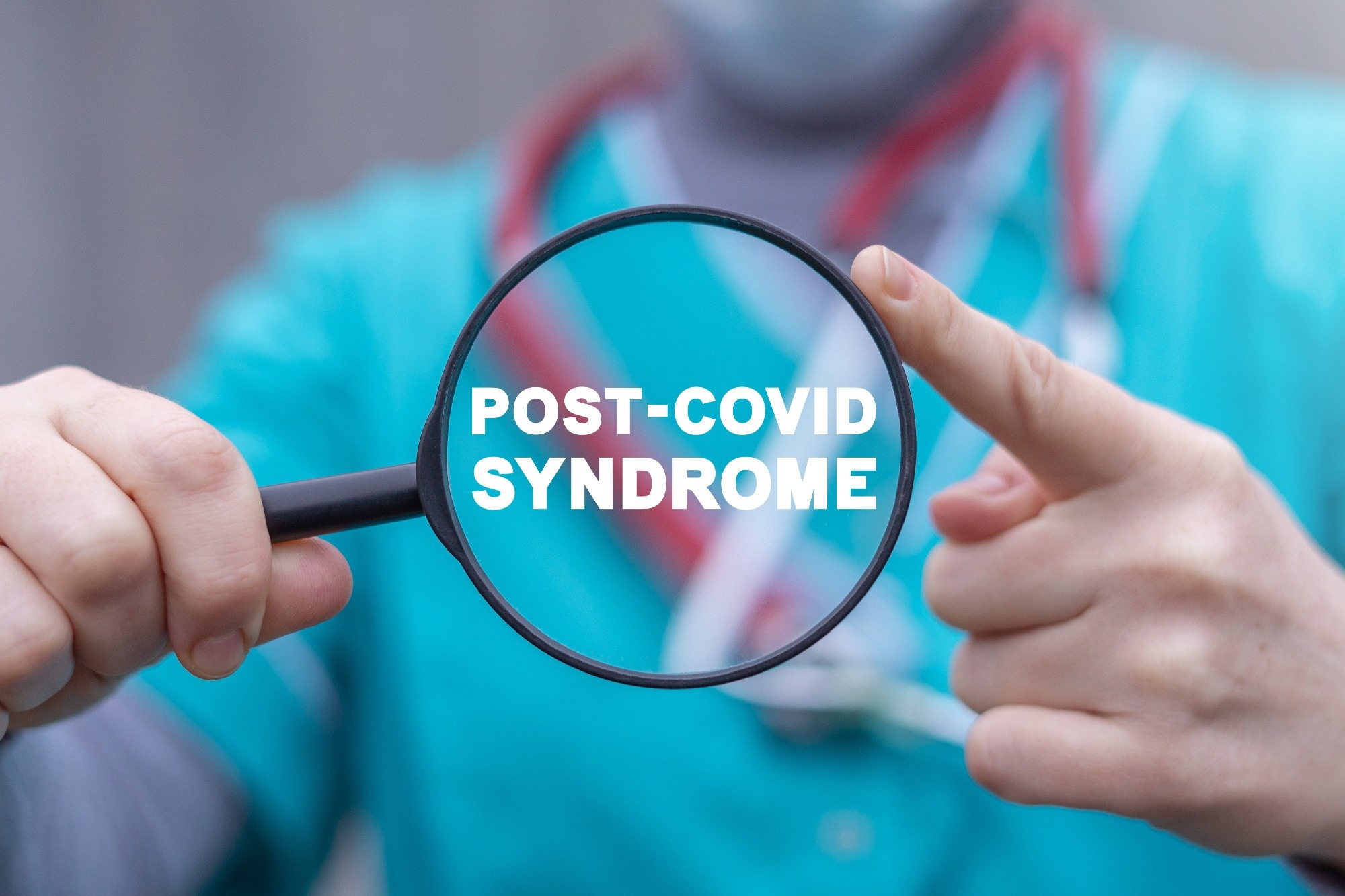In a recent study published in the American Journal of Tropical Medicine and Hygiene, researchers followed up by telephone with individuals recently infected with severe acute respiratory syndrome coronavirus 2 (SARS-CoV-2) and eight to 14 months later to identify the predictors of post-coronavirus disease 2019 (COVID-19) syndrome symptoms.
 Study: Prevalence and Predictors of COVID-19 Long-Term Symptoms: A Cohort Study from the Amazon Basin. Image Credit: PanchenkoVladimir/Shutterstock.com
Study: Prevalence and Predictors of COVID-19 Long-Term Symptoms: A Cohort Study from the Amazon Basin. Image Credit: PanchenkoVladimir/Shutterstock.com
Background
Despite more than 500 million COVID-19 cases worldwide, there is a lack of understanding of the long-term outcomes of this deadly disease. The lack of a uniform definition of post-COVID-19 syndrome has also made it tedious to determine the predictors of post-COVID-19 syndrome.
Nonetheless, 18% to 89% of patients with symptomatic acute COVID-19 developed late symptoms, commonly fatigue, sleep disorder, dyspnea, cough, arthralgia, and chest pain.
Moreover, it is unclear whether previous contact with tropical infectious diseases or SARS-COV-2 reinfection increases the probability of late symptoms or worsens them the second time.
A previous study showed a higher prevalence of COVID-19-induced acute symptoms among those with dengue infection in people inhabiting the Amazon Basin. Notably, other tropical diseases, malaria, zika, chikungunya, leprosy, and visceral leishmaniasis, are endemic in the Amazon basin.
About the study
In the current prospective cohort study, researchers used a previously published cohort study sample with two independent groups of 1,339 and 32 individuals with a primary SARS-CoV-2 infection and two SARS-CoV-2 infections (reinfection), respectively.
However, they studied 1,371 individuals infected with SARS-CoV-2 in Rio Branco city of the Brazilian Amazon Basin.
The team collected sociodemographic and other clinical data, including weight, height, smoking status, history of endemic infectious diseases, COVID-19 symptoms during an acute contagious phase, hospitalization details, and reinfection details, specifically, their persistent and new symptoms using a 12-month follow-up questionnaire.
Post-COVID-19 condition is the persistence of COVID-19 symptoms up to 12 months after diagnosis with no explanation. Likewise, the Centers for Disease Prevention and Control (CDC) defines SARS-CoV-2 reinfection as a positive reverse-transcriptase (RT)-PCR transcription test at a gap of 90 days.
The team compared the primary infection and reinfection groups with categorical and continuous variables with and without normal distribution, expressed as absolute percentages (%) and mean standard deviation (SD).
To this end, they used Fisher’s exact and Student’s t-tests for variables with normal distribution and Mann–Whitney test for variables without normal distribution.
Next, they used a Poisson regression model to identify predictors of post-Covid-19 syndrome and variables with P values <0.05 in an adjusted multivariate Poisson regression indicated independent predictors. Finally, the team performed a sensitivity analysis to verify whether the risk predictors varied according to race\ethnicity.
Results and conclusions
In a cohort of 1,371 COVID-19 patients with an average age of 39.7 ±11.7 years, 50% were female, 32 experienced reinfection, and 806 people mentioned having a tropical infectious disease in the past. When followed for 12 months, 877, i.e., 63.9% of these participants experienced COVID-19-related late symptoms.
The authors noted that female gender, non-White ethnicity, acute-phase COVID-19 symptoms, body mass index, and SARS-CoV-2 reinfection were independent predictors of more post-COVID-19 syndrome symptoms even after accounting for multiple factors.
However, the previous episode of an endemic tropical disease, including dengue, was not associated with long-term symptoms in the people residing in the Amazon Basin.
Fatigue, the most common post-COVID-19 syndrome symptom, affected 43.5% of subjects.
In the current study, researchers followed up with 32 participants who experienced SARS-CoV-2 reinfection 2.3 months after the reinfection, which is why they reported persistent symptoms. Extensive tissue damage and pathological inflammation likely exacerbated the progression to the post-COVID-19 syndrome.
Furthermore, 64% of COVID-19 patients developed post-COVID-19 syndrome in the Amazon Basin, which was high relative to Asian and European regions.
In sensitivity analysis, they excluded individuals with less than three months between reinfection and 12-month follow-up, yet, the findings remained similar to those obtained in the primary study analysis.
Thus, it requires further investigation whether reinfection is an additional risk factor for post-COVID-19 syndrome because self-reported data usually introduce information bias.
Nonetheless, the study identified several risk factors associated with post-COVID-19 syndrome in the population of the Amazon Basin, where multiple tropical infections are endemic. Despite this, having an endemic tropical disease did not raise the risk of COVID-19-related persistent symptoms in 12 months of follow-up.